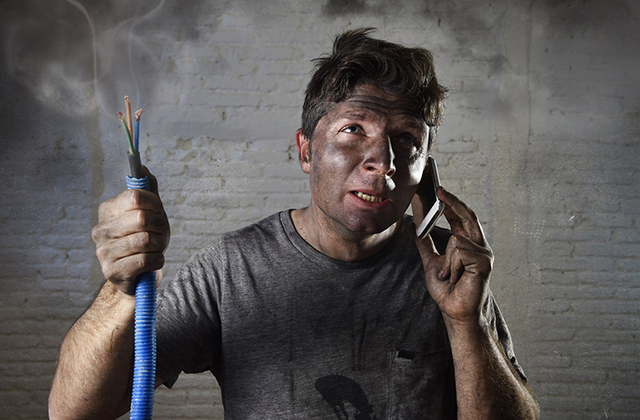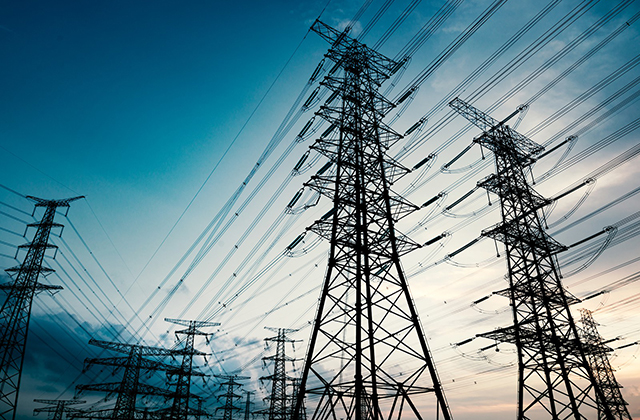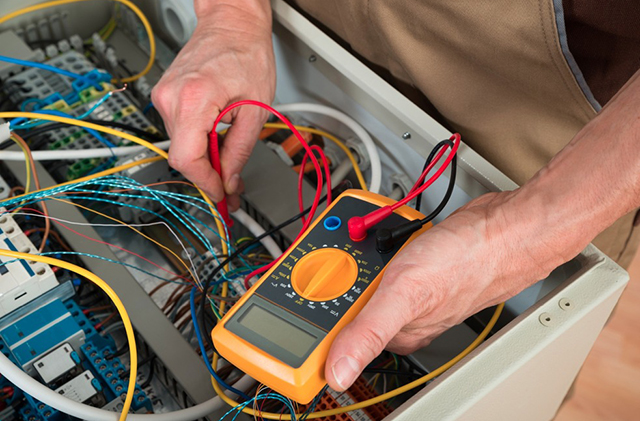Revolutionary Use of Half Pool Covers
Every year swimming pools are wasting billions of gallons of water that can be saved. This paper addresses the problems with the current use of full pool covers and how half covers are the solution to pool water conservation. One way to reconstruct your pool is hiring a pool removal Sydney.
It is well known that pool covers can reduce water evaporation by up to 95%, yet less than 30% of pools are using covers. The current limitations imposed by full covers for the most part boils down to two problems.
The Twofold Problem
First, full covers are difficult to stock. Full covers are bulky and must be stocked in 50 or more sizes requiring a sizable amount of floor space to have covers on hand for the myriad of pool sizes. If a size goes out of stock, the customer has to wait until the warehouse reorders another truckload of covers. This distribution and stocking problem severely limits the available stock on hand at any one time and prevents the customer from being able to purchase on demand.
Second, full covers for the most part fit only rectangular shaped pools. Covers initially come off the production line as sheets in rectangular shapes and are heat seamed together for various widths. They can be further cut into oval or round sizes, but nevertheless most of the pools built today are irregular free-form shapes and custom designs. In order to accommodate free-form pool shapes the customer many times must oversize the cover which means ordering an even larger than needed cover and cookie-cutting the cover to the free-form pool using the inside of the pool cove as a guide. This however can create a lot of waste. And how do you accommodate say an L-shape pool?
The twofold solution is that by using half covers, the number of cover sizes for distribution and stocking can be reduced from over 50 to just 4 half cover sizes (see below) which can be mixed-n-matched to work with almost all pools up to L-shapes solving both of the aforementioned issues.
Encouraging the industry to distribute half covers allows more people that ever to cover their pools. This practical way of using half covers revolutionizes the way covers are stocked and distributed, never incurring oversize shipping charges, and allows dealers to have covers in stock so pool owners never go home empty handed. By solving the problems preventing all pools to use covers, in the wake of water shortages that are only getting worse, it becomes a mandate to encourage all pools to be covered.
The Added Problem with Handling Full Covers
Another overwhelming limitation to full cover usage is that historically the only device sold for handling these covers has been the deck reel, an expensive bulky towel rack like device that sits at the end of the pool consuming valuable deck space. The problem with deck reels is that even if you cookie-cut your over-sized cover to fit your free-form pool, deck reels do not handle curvy free-form pool covers very well. Also if you have limited or no deck space where are you going to put your reel?
That said, as things stand today, only pools that can accommodate a deck reel have a solution for taking the covers on and off the pool, which is much like having invented breakthrough inflatable rubber tires for the auto industry, but no jack to remove them with on 70% of the cars.
For all those millions of pools without a jack, there is an innovative half cover rolling solution that can assist in the removal and handling of covers for pools that can’t use a deck reel. Because most custom free-form pools cannot use a traditional deck reel, many of those pool owners are already splitting their bulky pool covers to make them easier to remove by hand, and are doing so at the advice of pool shops who want to sell them a cover, but cannot sell them a reel. The half cover rolling device just takes this a step further, and makes it possible for custom free-form pool owners who want to purchase a cover to have a means to handle the cover too.
The Industry Change to Half Cover Distribution
As mentioned above to be expounded on here, distribution of full pool covers today is a nightmare for distributors because full cover distribution requires a multitude of covers sizes to support the many different size pools out there. Enabling custom shaped pools to use half pool covers, the plan is to revolutionize the way covers are distributed, lowering the cost for everyone and making stock on hand a top priority to solve the problem with special ordering or waiting for a cover to come in stock.
Four Sizes: Employing the revolutionary strategy to provide half pool covers will solve this problem to support the majority of pools under 20x40ft. By shifting to the four size distribution model, half cover sizes (14×14, 16×16, 18×18, 20×20) can be mixed and matched to each half of the pool. Furthermore, online internet retailers can ship the lighter more compact half cover sizes, avoiding dreaded overcharges due to weight, making shipping costs more predicable and controllable. For handling the covers, stores can provide the lightweight compact half cover roller device that currently ships coast-to-coast at a fraction of the cost of the heavier/bulkier deck reels which require two boxes. For anyone doing business over the internet, shipping lighter and more compact half covers alone is a remarkable dollar saving breakthrough.
Out of the Warehouse and Into the Stores: For retail stores, by reducing pool cover stock sizes from the multitude of covers sizes (that must be special ordered from the warehouse and delivered next day or longer if on back order) to just four sizes, covers can easily be stocked right at the store. With the new half cover distribution model, retailers can now have “stock on hand” for immediate purchase. Having stock on hand will substantially increase cover sales helping people more than ever not only have a warm pool, but most importantly conserve water and chemicals to help our environment.
Potential Market Expansion using Half Covers
Water agencies realizing the great value of pool covers to save water are beginning to offer rebates toward the purchase of a pool cover. For instance, Southern Nevada Water Authority (SNWA) offers a $50 rebate for pool covers. On the international stage the hard hit drought stricken Australia offers pool owners a $200 rebate toward a cover and roller system.
Getting the Word Out: In light of the pressing need for pool covers, the greatest need is to inform everyone that the concept of using “whole pool covers” to cover the entire pool severely limits the distribution of covers, and also requires the consumer to purchase an expensive and awkward deck reel, or remove the cover by hand; emphasizing too that this solution only works on less than 30% of pools substantially limiting “use” of covers. Conversely, using the Split-Cover System, almost all pools can now use a cover, and is more cost effective for everyone resulting in higher sustainable sales for the industry overall.
A few years ago an alternative product called Sun Rings came into the market and many retail and online stores are carrying them, but a typical pool needs 10-15 rings at over $30/ea, the rings can bunch up at the end of the pool on windy days, are slow to fish out of the pool one at a time, and according to some retailers have thus experienced a higher customer return rate. On the other hand, the half cover system has a high customer satisfaction rate. It’s easy to see then that whole covers are too big, Sun Rings are too small, and half covers are just right.
Water Conservation Programs & Rebates
Current water shortages in parts of the nation, especially as mentioned in western U.S. areas like Las Vegas, are requiring communities to be on year round water restrictions and may potentially drive the increased demand and expansion of the pool cover market. Programs such as Water Smart in the Las Vegas area, and Water Sense sponsored by the EPA are dedicated to conservation. Additional programs by agencies offer pool cover rebates at participating dealers.
To do it’s part in the fight for water conservation nationwide, the half pool cover distribution model will greatly assist in supplying stores everywhere with just-in-time stock on hand. In this way over time we will be helping to save billions of gallons of wasted water nationwide, by facilitating the distribution of pool covers in a much needed and better way. It takes about only 200 pools using a cover to save an entire city tank of water because a pool left unchecked for a year can completely evaporate… and that’s a lot of wasted water!
Water Loss Calculation
Let’s calculate the number of wasted tanks of drinking water through evaporation by pools.
Sacramento: Using an average evaporation rate of 17,500 gallons/pool annually, it takes only 200 pools to waste an entire city tank of water. If Sacramento has over 50,000 pools, then Sacramento alone wastes 250 tanks of city water every year (or) 2,125,000,000 (that’s BILLION) gallons of water every year! What’s that make you think about when they start rationing water and your lawn’s going brown, while your bill’s going up?
The 17,500 gallon/annual evaporation figure is probably conservative (other reports site 1.5″/week). In Australia one study by Sealed Air Corporation states over 86,000 liters per year, or over 22,700 gallons annually evaporates from the pool. In Las Vegas, the average is 100 inches per year, yet all evaporation rates vary depending on a number of conditions.
Nationwide: If the nation has around 8.5 million inground swimming pools, then nationally we waste 42,500 tanks of water every year. This amounts to 42,500(tanks) x 3,500,000(gals) = 148,750,000,000 gallons of water annually in the US alone. Again, that’s BILLIONS!
Add an additional 30% for aboveground pools to approximate another 45 billion gallons of water evaporation, and we are looking at almost 200 billions gallons of water wasted annually in the U.S. alone. Aside from the water conservation issue, think about the cost of energy used to process and create that amount of drinking water.
Worldwide: Now think worldwide and one doesn’t have to ask if this is an issue that is rife to be addressed with a sense of urgency by all parties involved.
About the Rolling Device
The key to the innovative half cover solution is the Split-Cover System that rolls half the cover at a time, so almost all pools up to L-shapes are able use a pool cover. The patented system includes two individual free-floating rollers that are fastened directly to the underside of the buoyant half covers, each roller spanning the middle of each half cover. Custom locking fasteners are used that button the rollers to the covers and are removable if you wish to detach the covers in the off season. The lightweight free-floating adjustable length rollers span across the middles of each half cover (similar to how reels are placed across the middle of a round pool) but are directly fastened to the underside of the cover. The rollers are supported entirely by the buoyancy of the cover, so nothing attaches to the pool and is completely free-floating with the cover.
To operate the system, the customer just pops on a removable crank handle to one end of the roller tube to begin the rolling process. By turning the crank, the roller pulls both ends of the cover into the middle to wrap around itself right on the water, resulting in nice compact floating roll that, once the water drains from the end, weighs less than 30 lbs (about the weight of a 3 year old), so is compact and easy to handle. When not in use the device is completely hidden so is not an eye sore to your beautiful backyard pool setting that you paid so much for.
The innovative split cover remedy in short requires no deck space, accommodates almost any shape pool up to L-shape pools, is light/compact and completely hidden, and is easy enough to roll a cover in under thirty seconds. Switching to the easier to distribute half pool covers endeavors to help the millions of custom pool owners by providing them a practical solution and a choice they never had before, and moreover, to help us all do a better job at conserving precious water.
Conservation is the Goal
In summary, the half cover distribution model will be doing it’s part to conserve water and support the cause of many water starved communities (such as Las Vegas, Australia, and others) that are water rationing and promoting pool covers through rebates so consumers will do the right thing and cover their pools. Efforts to change the way pools are covered will revolutionize the distribution and stocking of pool covers, leading the industry to change it’s distribution model which will dramatically conserve precious water. In the half cover distribution world, retailers and wholesalers will never be out of stock utilizing the revolutionary “just in time” stock on hand distribution model. Retail stores will more than ever have an incentive and the ability to stock covers at the store for immediate sale, rather than special order from the warehouse requiring customers to come back for pickup, and wholesalers will move more inventory out of the warehouse and into stores. The warehouse will benefit because they can enjoy the same profit margins, but move stock immediately out to retailers rather than waiting for truckload deliveries in their space constrained warehouses. And the customer will be able to get what they want, when they want it so that everybody wins in the never ending fight for water conservation.
Questions and Comments
Please send any questions, comments, and suggestions about this device for your pool to info@solarfactory.com or visit http://www.solarfactory.com
David Hoff, Inventor CEO
David Hoff is inventor of the patented Solar Roller, the only device for handling 1/2 pool covers. Half Covers are the secret for any shape pool to be covered. It only takes 200 pools using covers to save a 3.5 million gallon tank of city water.
So there’s a better way to stop the waste of precious city water, to use HALF COVERS rather than full covers. With half covers, almost any pool can be covered up to L-shaped pools. If there is a better way of doing something that saves billions of gallons of water, then in the wake of drought and water rationing, why aren’t all pools being covered?
In Sacramento alone 2,125,000,000 (that’s BILLION) gallons of water could be saved every year!
Article Source: http://EzineArticles.com/expert/David_Hoff/283975
Article Source: http://EzineArticles.com/2006338









